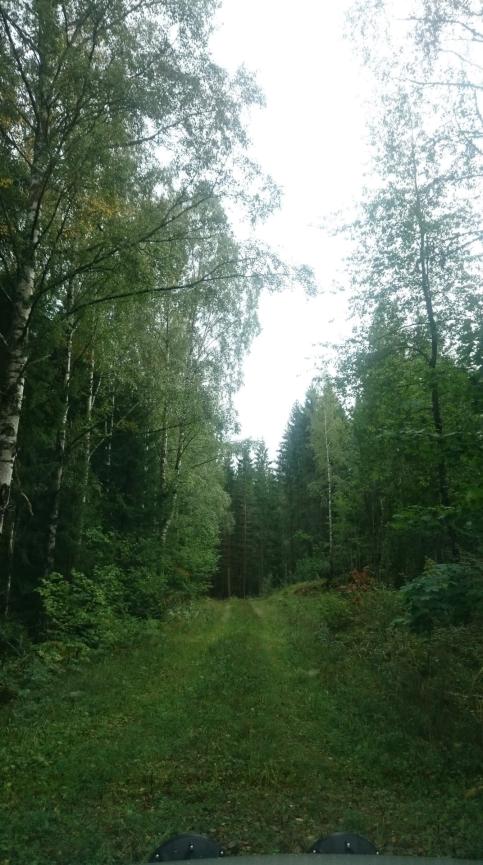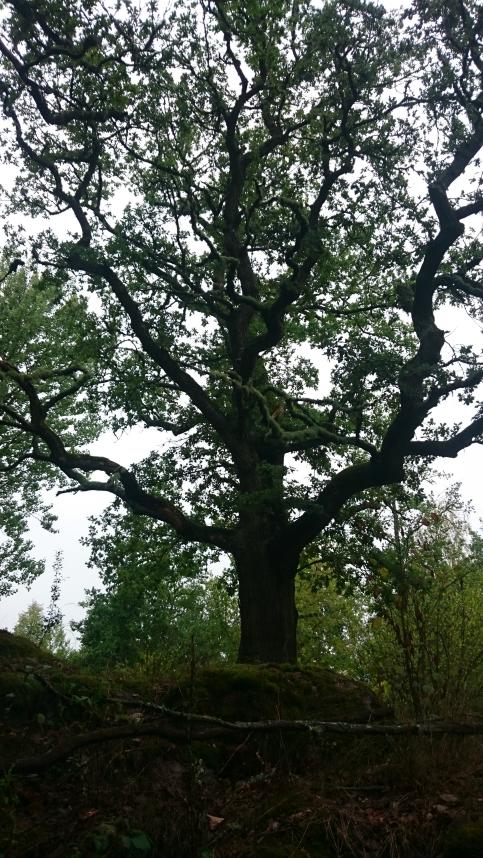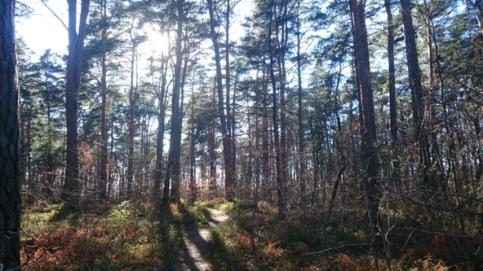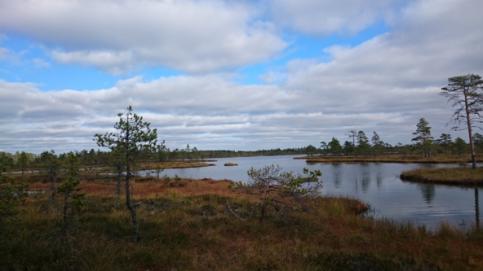Discussion

The overall results from both the inventory of the Swedish Forest Agency and the field inventory in oak-rich environments indicated that the management need was high and differed due to forest types and tree composition. Below I will discuss some of the trends in the results, with a focus on oak-rich environments.
Environments including oaks had the highest management need and non-intervention was rarely set even with low proportions of oak. Cutting (mainly spruce) and grazing were the most common management actions and the proportion of grazing increased with an increased proportion of oak. Historically, these landscapes and the species living in them are adapted to a high frequency of disturbances and many species are favoured by an open landscape with a high sun exposure and warm microclimate. However, fast successional changes have happened in these areas when grazing and other disturbances gradually declined, creating denser forest stands. This has resulted in that several species have gone extinct, mainly in southern Sweden. Proposed management actions with grazing and partial cutting are therefore in line with providing suitable environments and microclimate for species. Especially since grazing helps maintain habitat values, such as compositional and structural diversity in a forest and keeping areas open and sun-exposed.
Partial cutting has been shown to favour oak regeneration in closed-canopy forests. Oaks seldom succeeds to regenerate in dense forests and therefore partial cutting is important since it creates lighter stands. Other studies have shown similar results where biodiversity and local species richness of oak saproxylic and herbivorous species, meadow herbs and lichens living on dead wood in overgrown oak rich areas, were favoured by partial and careful cutting.

The need of management was also shown in the field-study of lichens in an oak-rich environment where a negative correlation was shown between total canopy cover and of canopy cover of bushes and young trees and the occurrence of Chaenotheca phaeocephala. Similar results have been shown where bushes (canopy cover) had a negative effect on the occurrence of Chaenotheca phaeocephala as well. This has also been seen in another study for the abundance of lichens. Occurrence of Chaenotheca phaeocephala in this study was positively correlated with openness in the area, which as well have been seen in other studies.
Deciduous forests had the next highest management need of the dominating forest types and the most common management actions involved cutting, mainly of spruce trees. Wildfire, along with grazing by wild megaherbivores and later on domestic animals, have historically been the two major disturbances creating and maintaining deciduous forest. The volume and extent of boreal deciduous trees have however been reduced by exclusion of fire, transformation for agriculture and forestry activities. The lack of natural disturbances has changed the landscape and along with that, the prerequisites that the species are adapted to. Due to this, and the general lack of deciduous trees and suitable environments, many vascular plants, lichens and insects are disfavoured. To preserve the values and stop the continuing loss of species, active management efforts need to be prioritized and performed. The need of management was clearly seen in the results where the majority of deciduous forests were set with active management and there was also a clear trend indicating an increased amount of active management with a larger proportion of deciduous trees in an area.
Nevertheless, deciduous trees are quite diverse regarding their ecology and different deciduous trees therefore have different management need and different disturbance regimes. For instance, in birch and aspen forests, fire is the main disturbance regime. Historically after a fire, birch and aspen are the first species to colonize, thereafter secondary succession species like spruce comes in and takes over. Since the both light favoured pioneer species are disfavoured by shade and cannot regenerate well in shady environments, they will decline as spruce takes over. Historically, once the area burned again, spruce would be reduced, allowing birch and aspen to recolonize. However, since natural fires rarely occurs currently, proposed management options like cutting, mainly of (young) spruce and other trees might aim to mimic fire as a natural disturbance to reduce spruce and favour aspen and birch.

A large proportion of non-intervention was seen in coniferous forests, where around half of the areas were set with non-intervention. Historically, mainly forest fires and gap formations have been responsible for the functional and structural diversity found in coniferous forests. However, the management need and type of disturbances needed in coniferous forest are quite diverse since spruce and pine differ greatly regarding their ecology. Spruce and pine therefore need different types of management to preserve its values.
Pine dominated forests had a lower management need than spruce dominated forests, but non-intervention was still the most common management in pine forests, independent on the proportion of pine in the forest stand. The most common active management methods were cutting around trees and prescribed burning. Historically, mainly forest fires have been responsible for the functional and structural diversity found in pine forests. Pine forests are mainly classified as “Often” in the ASIO classification, meaning that the species and values in these forests are favoured by a high frequency of disturbances. Several species are also favoured by direct sunlight and it is therefore important that these forests are kept open.
However, the amount of natural forest fires has declined, and prescribed burning is not performed in such a large extent. For instance, in Sweden around 150 years ago, 1 % of the forested areas burned annually, compared to while only 0,016 % of the forested areas burns annually nowadays. A lack of fire in areas that historically burned frequently, results in a loss of habitats, structures and substrates that are essential for pyrophilous species, which are adapted to and dependent on forest fires as disturbance regime. The shift from open and sparsely vegetated forests to denser and shaded forests may happen when spruce takes over. However, since spruce are is sensitive towards drought and fire, prescribed burning may be used to remove spruce and preserve pine trees, since pine trees are tolerant towards both fire and drought. The proportion of prescribed burning set is however rather low, which might be due to that there is only a few areas with old pine trees and a large proportion of dead wood left in Sweden. Applying prescribed burning in these are would mean that the only areas including that much dead wood, would incinerate. Therefore, other management actions that mimics fire, e.g. selective cutting (cutting around trees) that have been proposed, may be applied in these areas, while prescribed burning might be used on not as old pine areas, lacking a high proportion of dead wood. There are also other factors that limits the usage of prescribed burning, such as financial interests, economy and location of areas.
Areas that does not demand that much management are areas dominated by spruce, which overall had the second lowest management need. The result shows a clear trend that the proportion of non-intervention increases with an increased proportion of spruce in the forest stand. Spruce dominated forests are forests shaped by internal dynamic and have a long continuity. Spruce is sensitive towards drought, flooding and fire but are shade tolerant and spruce dominated forests are therefore often dense and have a low frequency of disturbances historically, resulting in that species living here are adapted to a closed and shaded environment with long continuity. To preserve species living here, forests should not be cut but instead remain closed and undisturbed, otherwise the moist microclimate may change, leading to that species disfavours.

Swamps had the lowest management need of all dominating forest types and tree compositions looked at. Given that swamps as a habitat do not have a history of disturbances, it was surprising to find that the management need regardless was quite high and that actions like cutting of young spruce and cutting/bark stripping older spruce were proposed. Normally young spruce should not be able to take over since they are not favoured by a periodically high-water level. However, if a swamp has become drier due to drainage or edge effects, spruce may enter and in that case management is needed.
Conclusion
The proportion of active management set, and the variation of management, indicates a shift from mainly setting aside areas with no management, to rather look at an area’s disturbance regime, historical land use, species preferences and tree composition to decide an area’s management need. It is important to take these indications regarding management need serious and to understand that these actions needs to be performed urgently if the values and biodiversity in the forest should not disappear completely.
Responsible for this page:
Director of undergraduate studies Biology
Last updated:
05/15/19
